The Ultimate Guide to Building an Amazon Storefront
Sellerise Team, Contributor
8 min read -
Updated:You’re not here for another snooze-fest article stuffed with generic advice like “Use high-quality images” or “Write good copy.” You’re here because your Amazon storefront feels invisible. Creating a world-class Amazon Storefront isn’t just about slapping products on a page; it’s a science of branding, psychology, and algorithmic optimization.
Below is a tactical, tiered guide designed to help new sellers avoid costly mistakes and seasoned sellers unlock hidden growth levers.
Why the Amazon Storefront Is a High-Level Brand Asset
An advanced storefront is a potent brand asset that can reduce customer acquisition costs, raise AOV (Average order value), and maximize repeat purchases when done right.
Here’s why a storefront could transform your business:
- Exclusive Digital Real Estate: Your storefront is often the only ad-free, competitor-free environment you get on Amazon. At scale, that’s gold. It is pure brand equity.
- Integrated Brand Experience: A well-designed storefront unifies your entire product line and sub-brands. It’s not merely a collection of listings, it’s a curated experience that mirrors your brand’s personality. By guiding customers through a cohesive journey, you not only boost conversion rates but also cultivate long-term loyalty.
- Powerful Funnel Stage: Consider your storefront the critical bridge between awareness and purchase. It captures casual browsers, often driven by sponsored ads and converts them into multi-item purchasers and committed buyers. With strategic design and engaging content, your storefront becomes a mid-to-bottom funnel asset that lowers your overall customer acquisition costs.
- Repeat Purchase Machine: Followers of your store are more likely to repurchase and become loyal repeat buyers.
The Five Core Pillars of a High-Converting Amazon Storefront
An effective Amazon storefront is built on a solid foundation. By mastering these five pillars, strategic layout, mobile optimization, conversion psychology, smart keyword integration, and data-driven performance, you create a cohesive brand experience that turns casual visits into loyal customers.
1. Strategic Architecture
Define Your Objectives
Before you begin, clearly define the primary goals for your storefront. Whether your objectives include:
- Increasing average order value,
- Boosting conversion rates on specific product lines, or
- Enhancing customer engagement and loyalty, develop a clear vision for how your storefront supports these goals.
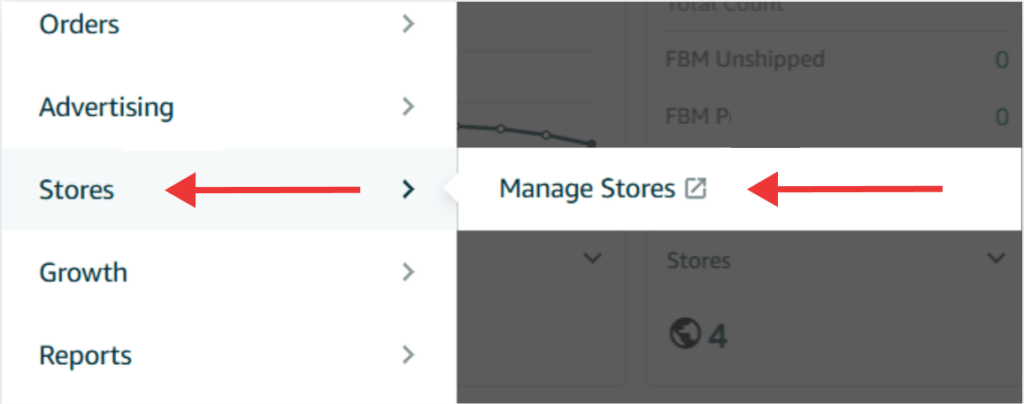
Blueprint Your Customer Journey
Start with drafting a dynamic visual map of your storefront. This is going to be your living document that evolves as you learn from customer behavior.
Your Categories Are Boring. Fix Them
Sell the outcome, not the product, because shoppers seek solutions, not just inventory, instead of generic categories like “Men’s T-Shirts” or “Electronics”, design sections that focus on the benefits or outcomes your product delivers.
For example:
Weak Category | High-Converting Alternative |
Men’s T-Shirts → | Gym Essentials: Moisture-Wicking Tees |
Kitchen Tools → | Meal Prep Mastery: 5-Minute Dinner Kits |
Protein Powder → | Gain 10 lbs of Muscle in 90 Days |
Bundles → | Weekend Warrior Bundle |

Use Curated Bundles As Your Upsell Engine
You can build an upsell engine into your store by planning for seasonal promotions, bundles, and story-driven collections.
Create creative bundles or seasons for your product lines, like a “Weekend Warrior Bundle”, that drive upsell and increase average order value.
This is an example from a coffee brand:
- New to Espresso? Start Here (entry-level machines)
- You’re a Pro. Let’s Geek Out (advanced grinders + accessories)
- Staff Picks: Our Caffeine Addicts’ Faves (bundles)
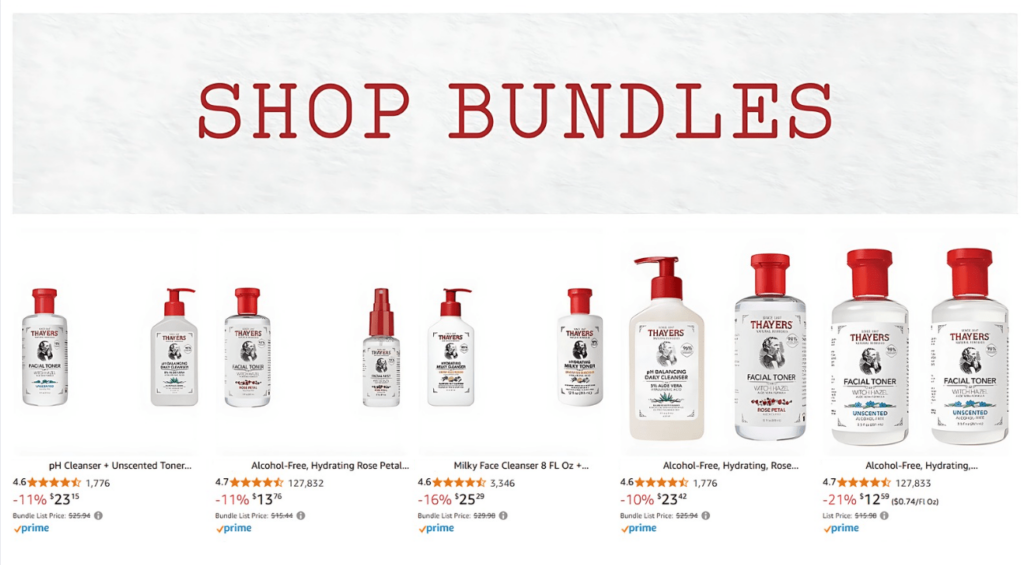
2. Mobile-First Design (Non-Negotiable)
Around 70% of Amazon traffic is mobile, but most storefronts are designed for desktops. So you need to start designing for the scroll.
Imagine this: A mom’s scrolling Amazon during her 6 a.m. her waking up. Your storefront pops up. She’s got one thumb free, a screaming children, and the attention span of a goldfish.
Your job is to make her forget the chaos and think, “Holy guacamole, I need this.”
Here’s how:
1. Hero Videos that Hook: Your hero banner isn’t a billboard, it’s a dopamine trigger.
Use intros with a 10 to 15-second video clip that immediately addresses the customer’s pain point, shows your product in action, and answers “Why should I care?” instantly.
Example: A pet brand shows a dog destroying a couch → cut to their indestructible bed → “Save Your Couch. Shop Now.“
2. Consider Mobile-First Thumb Zones: Place your most important products or CTAs where thumbs naturally tap (bottom-right for right-handed users).
3. Use Vertical Narrative: Structure your mobile design as a visual story, begin with a compelling pain point, move to your solution, and finish with an urgent call-to-action.
Advanced Tip: Experiment with modern “diamond layouts” on mobile. This pattern, inspired by TikTok’s visual storytelling, keeps users engaged and acts as a movie trailer. Fast, emotional, and impossible to scroll past.
- Top: Video of your product in action.
- Middle: Best-seller with a bold price tag.
- Bottom: New arrival or seasonal banner.
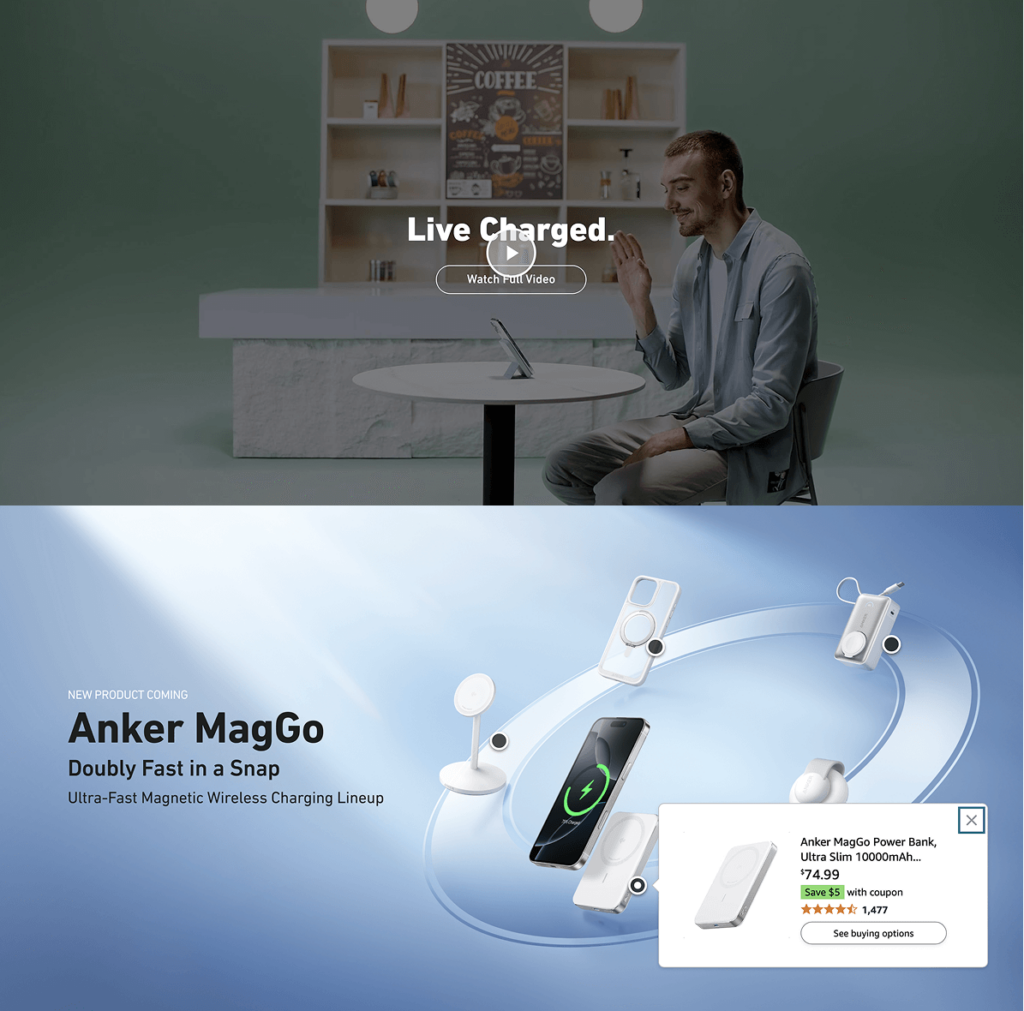
4. Prioritize Load Speed: Compress images to <500 KB using Amazon’s recommended formats (JPEG or PNG).
3. Conversion Psychology & Conversion Rate Optimization
1. Use Color Psychology Hacks (No PhD Required): Design virtual CTAs in your images and link each visual content to a product or variation. Use Amazon’s mobile preview tool and A/B test to determine which CTA button colors and wording drive the highest conversion.
Here are some examples:
- Urgency (flash sales): Red
- Luxury/trust (Supplements, baby gear): Navy
- Eco-friendly: Green + Earth tones
Pro Tip: To streamline A/B testing, consider tools that crowdsource feedback from real shoppers. For instance, platforms like Intellivy allow you to A/B test using real consumer preferences and help you quickly see what truly converts.
2. Heatmap-Driven Layouts: You can use heatmap analytics services like Marketplace Amps, Amazon heatmap analytics or teknicks.com to identify where customers linger (e.g., hero banners vs. product grids) and then place high-margin or hero products in the hot zones.
Additional Tip: Browsers usually scan web pages in an “F-pattern” (top-left to bottom-right). You can consider this when optimizing your storefront.
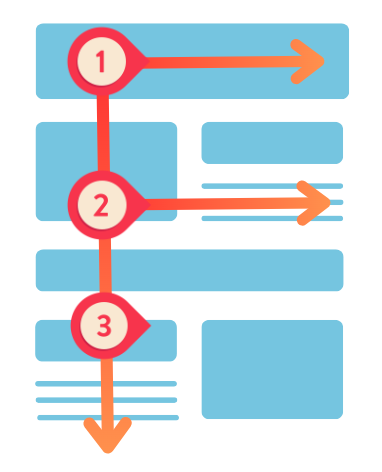
3. Embed Social Proof: Mix in authentic customer testimonials and user-generated content throughout your pages.
4. Leveraging Amazon’s Insights and Hidden Metrics
Amazon’s brand store insights (found in Seller Central) is your storefront’s report card. It tells you three critical things:
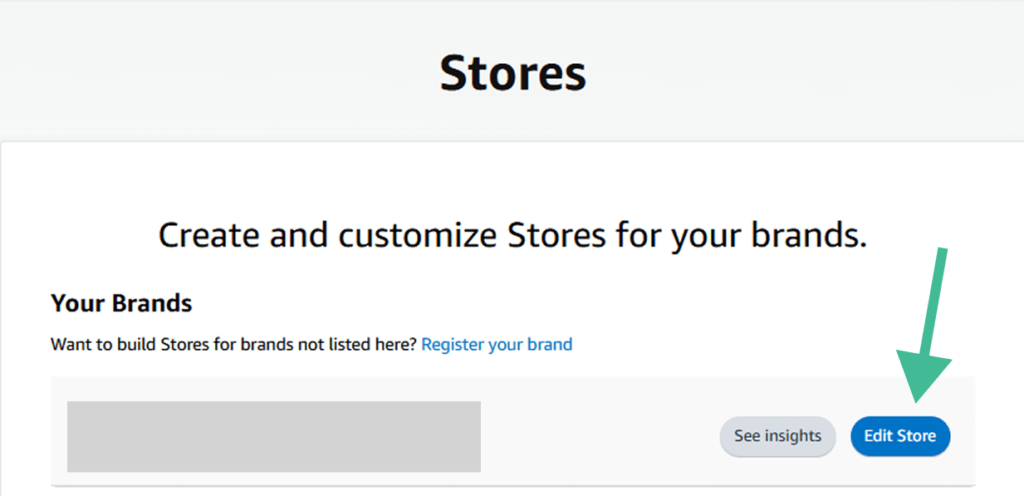
- Dwell Time: How long shoppers stay on your storefront (goal: >1 minute).
- Bounce Rate: The % of visitors who leave without clicking anything (goal: <50%).
- Views Per Visitor: Average pages viewed per visit (goal: >3).

If these numbers are mediocre, your storefront is leaking money. Here’s how to diagnose and fix the issues:
Problem 1: High Bounce Rate & Low Dwell Time
If your dwell time is less than 40 seconds or your bounce rate is above 50%, it suggests that shoppers aren’t hooked. Your content is boring, or your layout confuses them.
Here is how you can fix it:
- Hook Shoppers in 5 Seconds or Less: Use short autoplay problem-solution videos that hook.
- Add Interactive Elements: Use modules that support hover effects such as quick-view popups and interactive hotspots to create hover-activated zoom on product tiles, encouraging deeper engagement.
- Use Mini Stories In Sub-Pages: On sub-pages, pair products with relatable, scenario-based narratives (e.g., “Meet Sarah: A nurse surviving 12-hour shifts with our insoles”).
Problem 2: Low Views Per Visitor
If your views per visitor are less than 2 pages, it’s an indicator that your shoppers aren’t exploring. Your navigation is confusing, or your categories are forgettable.
To fix this:
- Avoid using general categories: Try this instead: group products by what your customer wants to feel, not what they’re called.
- Internal Linking: Add “Related Products” or “Complete the Set” clickable elements at the bottom of each page to naturally guide shoppers deeper into your store.
Now, let’s get into the metrics that directly tie your ad spend to revenue:
Storefront ROAS And Conversion Rate:
Use these metrics to evaluate which traffic sources (like Sponsored Brands or external traffic) are most effective and focus your budget on channels that drive higher conversion rates.
Storefront ROAS = Sales from Storefront Visitors ÷ Ad Spend to Drive Those Visitors

Storefront Conversion Rate (SCR): Orders from Storefront Visitors ÷ Total Storefront Visitors

Note: Top-performing storefronts typically maintain a conversion rate of 8% or higher.
By monitoring these metrics, you can fine-tune your ad spend and optimize your storefront’s design. This data-driven approach not only tells you if your content is engaging but also guides budget adjustments so that every advertising dollar works harder for your brand.
5. Smart Keyword Optimization & SEO Strategies
Your storefront isn’t just a digital brochure, it’s a live, data-driven asset that needs to attract the right customers. Instead of relying on basic keyword placement, use in-depth research to pinpoint high-converting keywords. Then, implement them on your storefront and run targeted ad campaigns.
Amazon SEO is about engineering relevance. By aligning your Storefront with Amazon’s A10 algorithm and shopper intent, you unlock:
✅ Lower Customer Acquisition Cost (CAC): Organic rankings reduce reliance on paid ads.
✅ Higher Average Order Value (AOV): Keyword-targeted shoppers convert 2x better than ad-driven traffic.
STEP 1: Data-Driven Keyword Discovery
To optimize your storefront, start by identifying high-intent, long-tail keywords that drive quality traffic with high conversion potential.
How to find high-converting keywords:
- Conduct reverse ASIN research on competitors using Keyword Re-Ranker to uncover untapped, profitable keywords.
- Focus on buyer intent rather than just search volume—find keywords with strong market demand but lower competition.
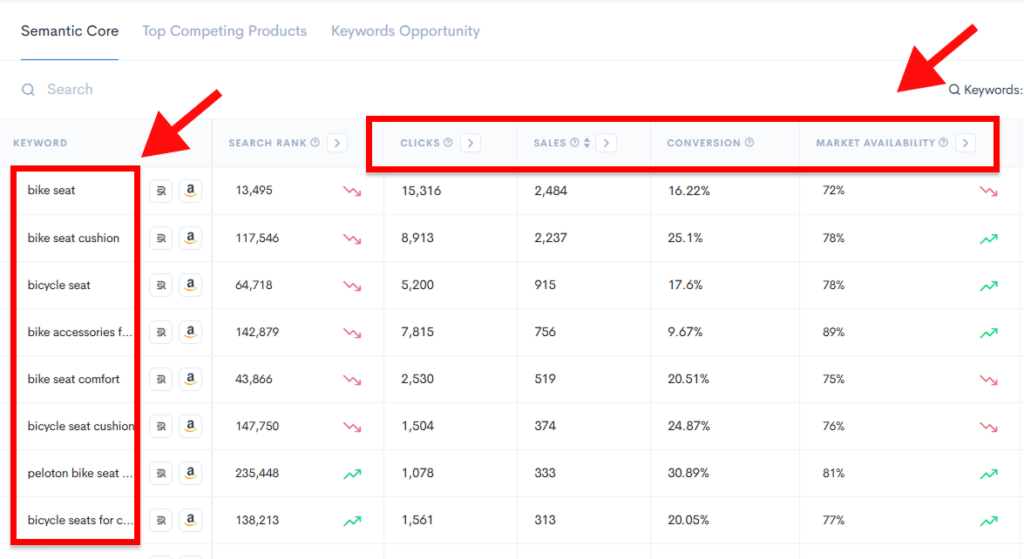
STEP 2: Seamless Implementation on Your Storefront
Once you’ve identified premium keywords, strategically integrate them into:
- Storefront copy (titles, category headings, and descriptions)
- A+ Content and product bullet points
- Multimedia elements (images, alt text, and video captions)
This enhances organic ranking while improving the user experience by aligning with real customer search behavior.

STEP 3: Targeted Ad Campaign Integration
Amplify your storefront’s visibility by running sponsored brand and display ads focused on high-performing keywords.
- Use Store Spotlight Ads to target your core product categories and best-sellers.

- Deploy Sponsored Display Ads to retarget shoppers who engaged with your storefront but didn’t convert.
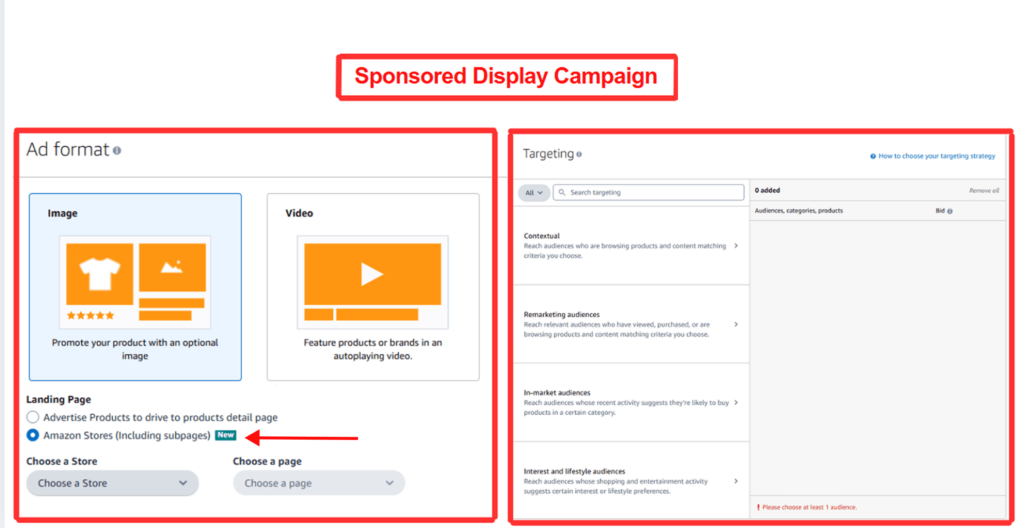
STEP 4: Continuous Refinement
Monitor how these keywords perform over time, using tools like:
- Sellerise’s SQP Insights provides a visual breakdown of your search funnel, showing traffic drop-off points,
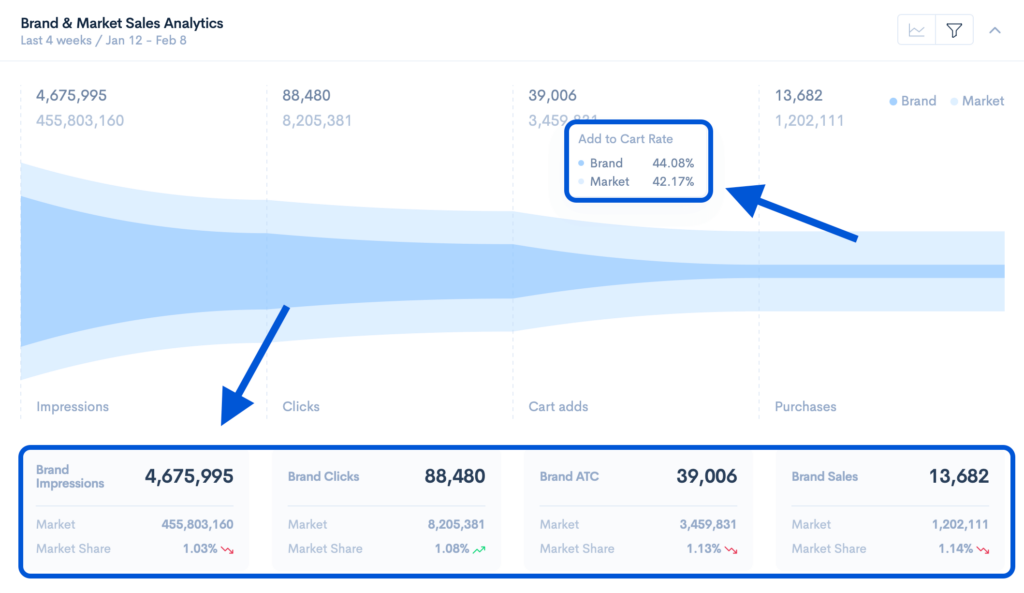
and highlights underperforming keywords:
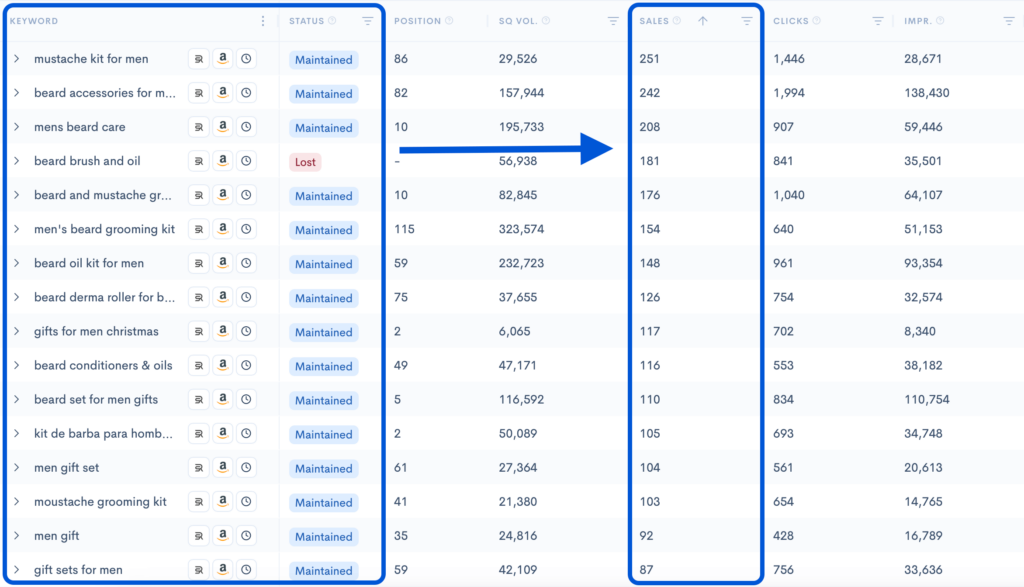
- Sellerise’s Keyword Tracker keeps you updated on real-time shifts in keyword rankings so you can see which terms are gaining momentum and which are dropping off.
Together, these tools let you adjust your strategy and keep your storefront competitive. With real-time insights, you can continuously optimize both your organic content and your ad campaigns, ensuring every advertising dollar works harder for your brand.
STEP 5: Optimize Multimedia
Amazon’s A10 algorithm prioritizes storefronts with optimized multimedia content.
📌 Pro Tip: Implement contextual keywords into:
- Images & Alt Text – Amazon now scans multimedia for relevance.
- Video Captions – Embed high-impact keywords naturally.
Amazon ranks storefronts for three key search types:
- Branded Searches – (“YourBrand + product category”)
- Non-Branded Searches – (“organic dog treats for allergies”)
- Related Brand Recommendations – (shown under competitor listings).
Conclusion
Your Amazon is a living, breathing ecosystem where psychology, data, and strategy collide to print profit. The difference between a “good” storefront and one that ignites sales isn’t luck. It’s about engineering every pixel, phrase, and click to work harder than your competitors.
These tactics aren’t just theory, they’re actionable insights that help you avoid costly mistakes and unlock hidden growth opportunities. Now it’s time to put these strategies to work, fine-tune your approach, and transform your storefront into a powerful sales engine. For more innovative tools and in-depth guidance, visit Sellerise and take your Amazon business to the next level.



